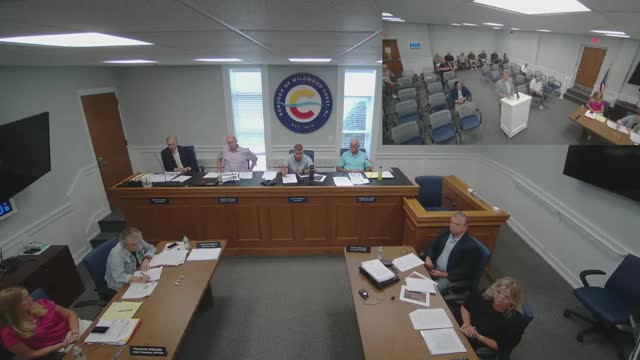Municipalities brace for major zoning and flood rule changes
July 26, 2024 | Wildwood Crest, Cape May County, New Jersey

This article was created by AI summarizing key points discussed. AI makes mistakes, so for full details and context, please refer to the video of the full meeting. Please report any errors so we can fix them. Report an error »

In a recent government meeting, officials discussed significant changes to local regulations concerning land use and housing, particularly in response to rising concerns about low and moderate-income housing. The county has proactively raised these issues, providing municipalities with a draft resolution aimed at addressing unique local concerns while complying with new state mandates.
Key discussions centered on the implications of these regulations for various municipalities, especially those with limited land availability. Officials emphasized the need for collaboration among public works, city engineers, zoning officers, and land use boards to assess how these changes would affect zoning standards, building heights, and future shore protection measures.
A notable shift in policy from the Department of Environmental Protection (DEP) was highlighted, as the agency moves away from traditional hard shore protection structures like bulkheads and seawalls. Instead, there is a push for hybrid designs that incorporate nature-based solutions, such as living shorelines. This transition could significantly impact future capital projects and their feasibility, particularly in historic districts where existing regulations may conflict with new requirements.
The timeline for implementing these changes is pressing, with a public comment period set to last 90 days following the publication of the draft resolution. Municipalities are encouraged to voice their concerns during this period, as the regulations must be adopted by August 2025 unless substantial changes are made, which would require a new review process.
Officials noted that while some municipalities are more resistant to these changes than others, all share concerns about the economic implications and the potential for abrupt regulatory shifts without gradual adjustments. The meeting underscored the importance of collective action among municipalities to ensure their voices are heard in shaping these critical regulations.
Key discussions centered on the implications of these regulations for various municipalities, especially those with limited land availability. Officials emphasized the need for collaboration among public works, city engineers, zoning officers, and land use boards to assess how these changes would affect zoning standards, building heights, and future shore protection measures.
A notable shift in policy from the Department of Environmental Protection (DEP) was highlighted, as the agency moves away from traditional hard shore protection structures like bulkheads and seawalls. Instead, there is a push for hybrid designs that incorporate nature-based solutions, such as living shorelines. This transition could significantly impact future capital projects and their feasibility, particularly in historic districts where existing regulations may conflict with new requirements.
The timeline for implementing these changes is pressing, with a public comment period set to last 90 days following the publication of the draft resolution. Municipalities are encouraged to voice their concerns during this period, as the regulations must be adopted by August 2025 unless substantial changes are made, which would require a new review process.
Officials noted that while some municipalities are more resistant to these changes than others, all share concerns about the economic implications and the potential for abrupt regulatory shifts without gradual adjustments. The meeting underscored the importance of collective action among municipalities to ensure their voices are heard in shaping these critical regulations.
View full meeting
This article is based on a recent meeting—watch the full video and explore the complete transcript for deeper insights into the discussion.
View full meeting
